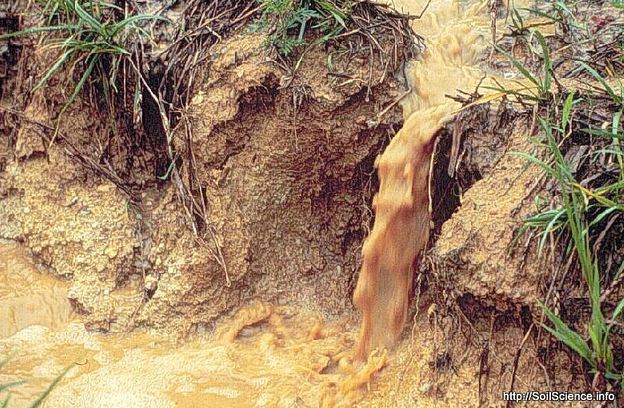A lot of us in the geoscience business are concerned these days with interpreting ongoing and past, and predicting future, responses of landforms, soils, and ecosystems to climate change. As one of my interests is rivers, I have noted over the years that in a lot of the literature on paleohydrology the major changes, such as major influxes of sediment, seem to occur at climate transitions, rather than after climate changes or shifts have had a chance to settle in and exert their impacts for awhile.
A related issue is the relationship between precipitation, temperature, runoff, erosion, and vegetation. As climate changes both temperature and precipitation regimes change. And as every physical geography student knows, moisture availability is not just about precipitation, but the balance between precipitation and evapotranspiration (ET). So, if both temperature and precipitation are increasing (as is the case on average on much of the planet now), whether available moisture increases or decreases depends on the relative increases of precipitation and ET.

Soil erosion on cropland.
Increases in available moisture, also called effective precipitation, would tend to promote both runoff and soil erosion on the one hand, and vegetation cover on the other. Since vegetation reduces erosion, we have another case of the result hinging on the net effects of “competing” processes. So, how does this all play out?
The two best ways to find out, in my view, are case studies of actual responses, and complex system models that directly address the networks of interrelationships. The former, as I mentioned, typically show major changes in rivers, and influxes of sediment, at climate transitions. For the latter, previous work (including some of my own, but mostly by others) suggests dynamical instability—that is, the network of interrelationships is such that changes to any part of the system (e.g., accelerated erosion, or change in vegetation cover) tend to persist and grow (within limits) over time, rather than a return to the pre-disturbance condition.
I decided to take another look, using a model slightly more complex than the vegetation-erosion interaction models (these predict that the system tends to “tip” to either a maximum vegetation/minimum erosion or a maximum erosion/minimum vegetation state, with intermediate states unstable). The model below, though, is less complicated than more elaborate models (again, including some of my own) that also include soil hydrologic properties, nutrients, and other factors. Those also typically indicate dynamical instabilities under many circumstances.

Interrelationships among soil erosion, runoff, and vegetation under conditions of changing effective preciptation. Green arrows indicate positive links, indicating that an increase or decrease in one component produces a change in the other in the same direction. Red arrows are negative links, characterizing relationships where a change in one component produces a change in the other in the opposite direction.
Many of the links are fairly self-evident—other things being equal, effective precipitation is positively related to both runoff and vegetation cover, vegetation reduces erosion, and vice-versa (due to loss of topsoil, nutrients, etc.). Erosion also tends to increase runoff, due to reduced soil moisture storage capacity and exposure of low-permeability subsoils.
I actually prefer these qualitative (links are simply positive or negative) models, as they are more general than quantitative ones. For example, the quantitative effect of runoff on soil erosion varies with topography, soil factors, etc., and is more or less unique for a given situation. The qualitative relationship, however—runoff goes down, soil erosion goes down, and vice-versa—is more or less universal.
Anyway, the dynamical stability of models such as this can be analyzed mathematically (remember, qualitative ≠ non-mathematical) using the Routh-Hurwitz criteria. I’ll spare you the details (if you are interested, shoot me an e-mail), but the results are that the network of relationships are dynamically unstable.
From the perspective of climate change, that means that if a change in effective precipitation results in a change in vegetation cover or surface runoff, the effects of that change are likely to persist and grow (perhaps disproportionately large compared to the original change). This explains why paleohydrological studies typically show major changes or regime shifts during climate transition periods. Those changes in an unstable system generate disproportionately large responses in sediment dynamics.
There’s an obvious warning here with respect to ongoing and future climate change—relatively minor climate-driven disturbances could result in disproportionately severe erosion and land degradation. But there’s also opportunity—in some situations relatively minor climate-driven disturbances in areas already experiencing erosion or degradation could be tipped into a minimum erosion, non-degrading state. And even in the former case, opportunities exist in such unstable systems to initiate relatively large desirable changes with relatively small “disturbances” such as, e.g., vegetation plantings or erosion control measures.

Eroded and restored gullies in Ethiopia (https://pcwoolner.files.wordpress.com/2013/02/mscfso.jpg).
